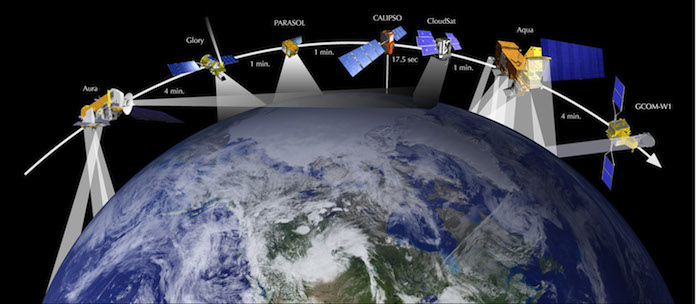
NASA’s satellites “on track” with remote sensing. Image: Ed Hanka, NASA
Scientists from NASA, the Wildlife Conservation Society, U.S. Fish and Wildlife Service and other organizations recently identified the top ways to boost awareness of global conservation with satellites and drones.
The study, “Ten Ways Remote Sensing Can Contribute to Conservation,” appears in the latest issue of the scientific journal, Conservation Biology.
It investigates the application of remote technologies like satellites to answering questions of global conservation, including wildlife protection and agricultural land development.
With funding from NASA, the study gathered 32 professionals in conservation science and satellite technologies from academic, governmental and nongovernmental organizations. Here are the remote sensing applications to conservation that they identified:
- Species movements and life stages
Example: Long-distance migrations of the monarch butterfly - Species distribution and abundance
Example: Amount of land covered by specific grass species - Ecosystem process
Example: Agricultural and atmospheric input of nitrogen - Climate change
Example: Regional changes in snow depth - Rapid response
Example: Wildfire response and illegal logging restriction - Protected areas
Example: Limiting human disturbance - Ecosystem services
Example: Soil erosion prevention - Conservation effectiveness
Example: Natural resource management - Agricultural/aquaculture expansion and changes in land use
Example: Protection against invasive species - Degradation and disturbance
Example: Livestock grazing and agricultural field structure
Scientists hope to jump on the Big Data bandwagon with a global initiative to solve conservation problems posed by the 10 topics.
Scientists from the study founded the Conservation Remote Sensing Network, a global collaborative that pairs professionals interested in applying satellite technology to conservation.